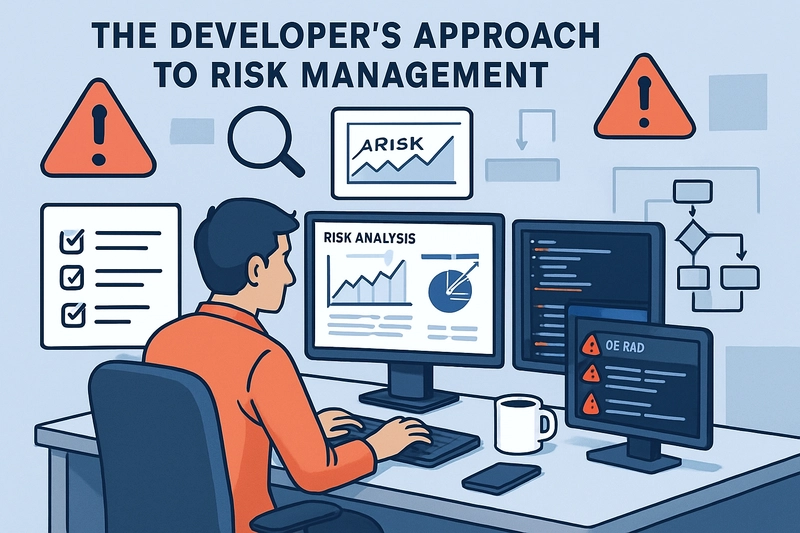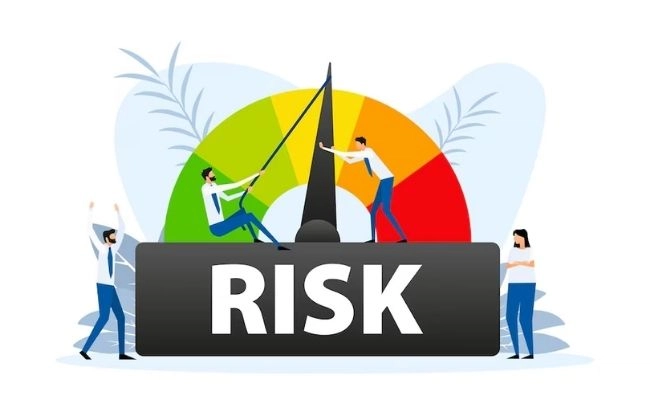Introduction
Managing risk is not a box-ticking exercise. For developers and engineering teams, it’s a core discipline that drives project success. Technical risks can derail delivery, drain budgets, and erode trust. But with a practical approach, teams can spot, assess, and address risks before they escalate.
This guide breaks down risk management for dev projects, using clear, direct language and real-world examples. We’ll cover how to build a risk register, design effective mitigation plans, and use tools and workflows that fit how developers work.
Why Risk Management Matters for Developers
Every dev project faces uncertainty. New technologies, shifting requirements, and integration challenges are part of the job. Proactively managing risk helps teams:
- Deliver projects on time and within budget
- Maintain code quality and security
- Avoid scope creep and rework
- Build trust with stakeholders and clients
Ignoring risks doesn’t make them go away. A structured risk management process gives you the visibility and control to keep projects on track.
The Developer’s Approach to Risk Management

Risk management in development projects follows a simple, repeatable cycle:
- Identify technical risks early and often
- Assess their likelihood and impact
- Mitigate with clear, actionable plans
- Monitor and adapt as the project evolves
Let’s break down each step, focusing on what works for dev teams.
1. Identifying Technical Risks
Start with a brainstorming session. Get the whole team involved- developers, testers, architects, and project managers. Use past project data, checklists, and retrospectives to surface risks that have caused trouble before.
Common technical risks include:
- Choosing an unproven technology stack
- Integrating with third-party APIs or legacy systems
- Inheriting poorly documented or low-quality code
- Underestimating performance or scalability requirements
- Security vulnerabilities in new features
- Dependency on a single key contributor
2. Assessing and Prioritizing Risks
Not all risks are equal. Use a simple scoring system to assess:
- Likelihood (How likely is it to occur? 1–5)
- Impact (How much damage would it cause if it happens? 1–5)
Multiply the two scores to get a risk priority. Focus your attention on high-priority risks.
Example:
| Risk | Likelihood | Impact | Priority |
|---|---|---|---|
| New API integration may fail | 4 | 5 | 20 |
| Minor UI bug in dashboard | 2 | 2 | 4 |
| Legacy code lacks documentation | 5 | 4 | 20 |
3. Building a Risk Register
A risk register is your single source of truth. It’s usually a simple spreadsheet or a dedicated tool. Each risk entry should include:
- Risk ID
- Description
- Likelihood and impact scores
- Priority
- Owner (who’s tracking it)
- Mitigation plan
- Status (open, monitoring, closed)
Sample Risk Register Entry:
| ID | Description | Likelihood | Impact | Priority | Owner | Mitigation Plan | Status |
|---|---|---|---|---|---|---|---|
| R1 | New API integration may fail | 4 | 5 | 20 | Alice | Build a mock API, test early, buffer timeline | Open |
| R2 | Legacy code lacks docs | 5 | 4 | 20 | Bob | Allocate time for code review, add documentation | Open |
4. Mitigating Technical Risks
Mitigation is about action. For each high-priority risk, define a clear plan:
- Avoid: Change the plan to remove the risk (e.g., pick a proven technology).
- Reduce: Take steps to lower the likelihood or impact (e.g., add automated tests).
- Transfer: Share the risk (e.g., use a third-party service with SLAs).
- Accept: Acknowledge and monitor the risk if it’s minor or unavoidable.
Practical Mitigation Examples:
- Unproven Technology: Build a proof of concept before full adoption.
- API Integration: Develop and test against a sandbox environment early.
- Legacy Code: Schedule time for code review and documentation.
- Security Risks: Run static analysis and penetration tests before release.
5. Monitoring and Adapting
Risk management is not set-and-forget. Review your risk register regularly. Update scores, add new risks, and close out resolved ones. Encourage open communication- if someone spots a new risk, add it immediately.
💡 **Tip:** Use retrospectives to discuss which mitigation strategies worked and which didn’t. Adjust your process for next time.Real-World Example: Launching a New Project Management Tool
Scenario: A dev team is building a new SaaS project management app.
Identified Risks:
- Technical: Integration with multiple third-party calendar APIs
- Market: Low adoption due to poor UX
- Process: Scope creep from frequent feature requests
Mitigation Strategies:
- Technical: Develop API integration modules in isolation, use automated integration tests, and allocate buffer time for unexpected API changes.
- Market: Conduct user testing with prototypes, iterate on feedback.
- Process: Implement a formal change management process, evaluate and prioritize new feature requests.
Tools and Workflows for Developer-Focused Risk Management
- Spreadsheets: Simple and flexible for small teams.
- Project management platforms: Tools like Teamcamp, Jira, or Monday.com offer built-in risk tracking, task assignment, and status dashboards.
- Automated alerts: Use workflow automation to notify owners when a risk escalates or needs attention.
Workflow Tips:
- Integrate risk reviews into sprint planning and retrospectives.
- Assign clear ownership for each risk.
- Document mitigation steps and follow up on progress.
- Keep communication open; risks are everyone’s responsibility.
Case Study: Risk Management in Action
A software company took over a legacy project with undocumented code. The team identified the lack of documentation as a high-priority risk. Their mitigation plan included:
- Conducting a full code review
- Creating missing documentation
- Scheduling knowledge transfer sessions with the previous team
By tracking this risk in their register and reviewing progress weekly, the team reduced onboarding time for new developers and avoided significant delays.
Risk Register Template for Dev Projects
Here’s a simple template you can adapt for your team:
| ID | Risk Description | Category | Likelihood | Impact | Priority | Owner | Mitigation Plan | Status |
|---|---|---|---|---|---|---|---|---|
| R1 | Unproven frontend framework | Technical | 4 | 5 | 20 | Dev Lead | Build prototype, evaluate alternatives | Open |
| R2 | API downtime | External | 3 | 4 | 12 | Backend | Add retries, fallback logic | Open |
| R3 | Key contributor unavailable | Resource | 2 | 5 | 10 | PM | Cross-train team members | Monitoring |
How Teamcamp Helps Manage Risks and Boost Productivity

Take free Trail of Teamcamp
Managing risks is easier with the right tools. Teamcamp is an all-in-one project management and collaboration platform designed to streamline workflows for dev teams. With Teamcamp, you can:
- Centralize your risk register, tasks, and project timelines in one dashboard
- Assign risk owners and track mitigation actions in real time
- Automate alerts for high-priority risks or missed deadlines
- Collaborate seamlessly, discuss risks, share files, and update statuses without switching tools
- Monitor progress with customizable reports and analytics
Teams using Teamcamp report faster project delivery, reduced administrative overhead, and improved client satisfaction. The platform’s intuitive interface and integration capabilities make it easy to keep your risk management process visible and actionable.
Conclusion: Make Risk Management a Team Habit
Technical risks are part of every dev project, but don’t have to be project killers. You create a culture of transparency and resilience by identifying, assessing, and mitigating risks early and keeping your risk register up to date.
Explore how Teamcamp can help your team centralize risk management, streamline collaboration, and deliver projects with confidence. Take control of your risks and turn uncertainty into opportunity.













Top comments (1)
Thought that finally someone started sharing valuable information, not just noise.
But in the end it turned out to be yet another advertisement.
Sad.